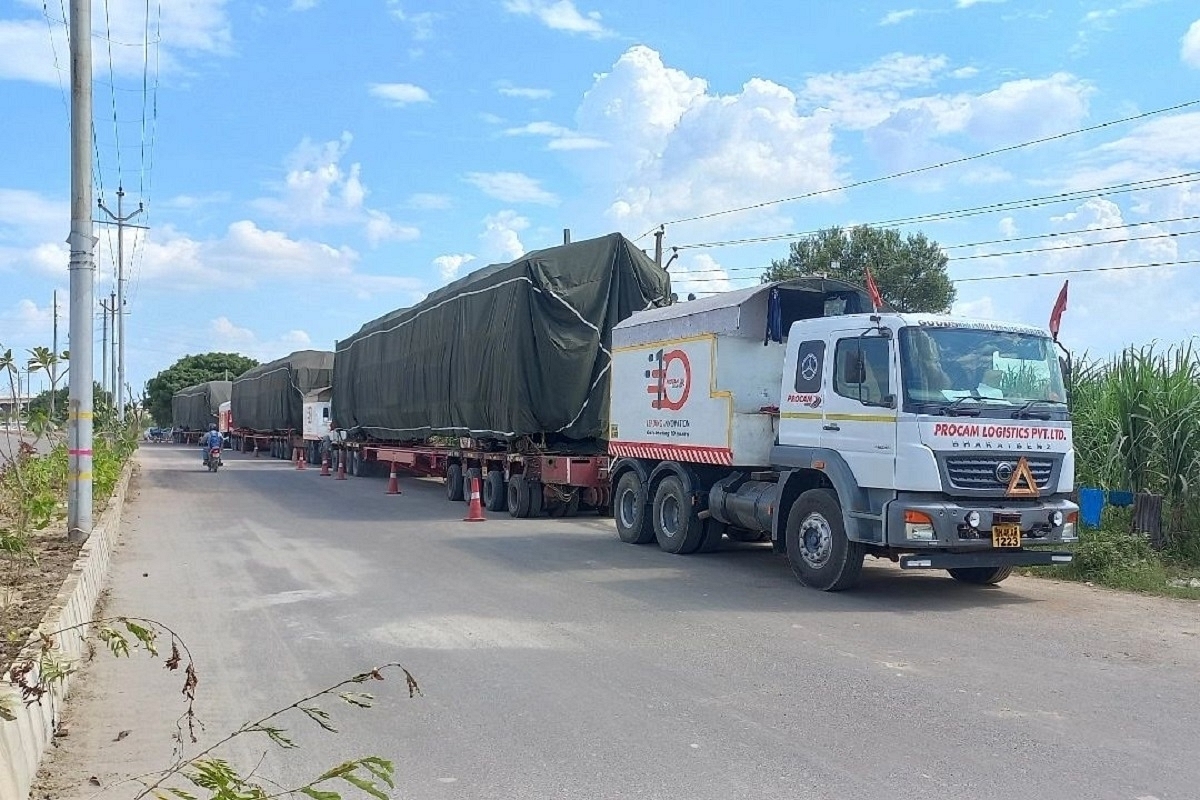News Brief
Delhi-Ghaziabad-Meerut: Second Trainset Of RRTS Corridor Reaches Duhai Depot
- Duhai Depot had received the first trainset earlier this year in June after it was unveiled and rolled out in a ceremony on 7 May 2022.

Trainset on its way to Duhai Depot.
Travelling through three states on the road, the second trainset of India's first Regional Rapid Transport System (RRTS) has reached Duhai Depot from Gujarat for the 82 km long Delhi-Ghaziabad-Meerut corridor.
Duhai Depot had received the first trainset earlier this year in June after it was unveiled and rolled out in a ceremony on 7 May 2022.
Loaded on a trailer from the manufacturing plant at Savli, the second trainset has travelled through Rajasthan, Haryana and Uttar Pradesh, and reached Duhai Depot.
The RRTS trains will have six coaches which can be further expanded to nine as per the operational requirement of the corridor. However, the Meerut Metro to be operational on the same RRTS infrastructure will have three coaches.
Under the Make-in-India guidelines, 100 per cent of trainsets for the country’s first RRTS are being manufactured in India at an Alstom (earlier Bombardier) factory located in Savli, Gujarat.
Alstom has been awarded the contract as per which they would be delivering a total of 40 semi-high-speed first-of-its-kind aerodynamic train-sets (210 cars) for the first RRTS corridor.
This includes 30 trainsets of six cars each for operating regional transit services on the Delhi-Ghaziabad-Meerut corridor and 10 train-sets of three cars each for local transit services in Meerut, bundled with rolling stock maintenance for 15 years.
The trainsets, with their sleek and modern design, will be lightweight equipped with a regenerative braking system and compatible with automatic train protection (ATP), automatic train control (ATC), and automatic train operations (ATO) features.
The regenerative braking system is an important feature of these trains, which generates electricity when the brakes are applied and the power goes back to the electric grid through the overhead traction of the train system, saving 30 per cent power cost.
The RRTS trains have ergonomically designed 2x2 transverse seating, wide standing space, luggage racks, CCTV cameras, laptop/mobile charging facility, dynamic route maps, auto control ambient lighting system, heating ventilation and air-conditioning system (HVAC) and other amenities.
The air-conditioned RRTS trains will have standard as well as premium class (one coach per train) along with one coach reserved for women commuters.
RRTS is the first-of-its-kind system in which trains, with a design speed of 180 kmph, will be available every 5-10 minutes and cover the distance between Delhi and Meerut in about 55 minutes.
NCRTC has taken the initiative of building a huge system of networks by seamlessly connecting the various public transit systems in National Capital Region. With multi-modal-integration, RRTS stations will have seamless integration with metro stations, railway stations, and bus depots, wherever possible.
Once operational, the first RRTS corridor is estimated to reduce 250,000 tonnes of carbon dioxide in vehicular emissions per year. With an expected daily ridership of around 8 lakh passengers, RRTS will be the most energy-efficient futuristic transit system.
The trial runs on the priority section are expected to begin by the end of this year and it is expected to be made operational for the public by 2023.
Support Swarajya's 50 Ground Reports Project & Sponsor A Story
Every general election Swarajya does a 50 ground reports project.
Aimed only at serious readers and those who appreciate the nuances of political undercurrents, the project provides a sense of India's electoral landscape. As you know, these reports are produced after considerable investment of travel, time and effort on the ground.
This time too we've kicked off the project in style and have covered over 30 constituencies already. If you're someone who appreciates such work and have enjoyed our coverage please consider sponsoring a ground report for just Rs 2999 to Rs 19,999 - it goes a long way in helping us produce more quality reportage.
You can also back this project by becoming a subscriber for as little as Rs 999 - so do click on this links and choose a plan that suits you and back us.
Click below to contribute.
Latest